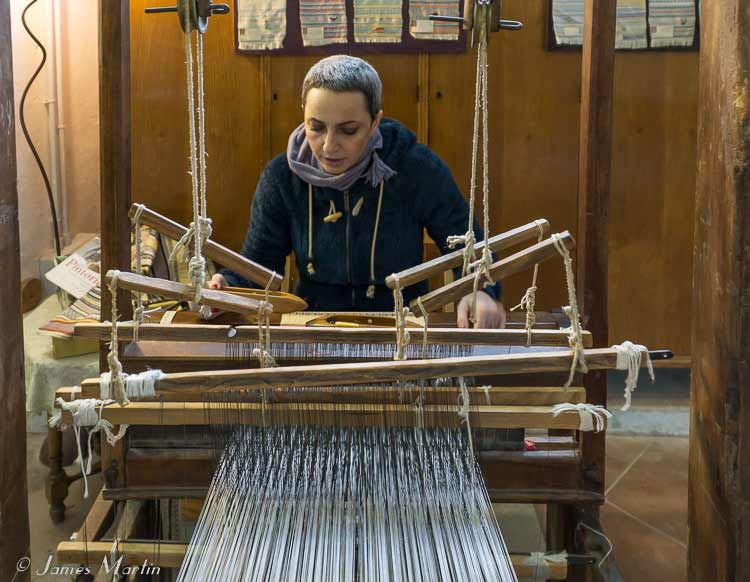Perugia, the largest city in central Italy’s Umbria region, is a lively modern hill town with medieval roots. Ancient walls from the Etruscan, Roman, and medieval periods enclose its historic center. Perugia offers a wealth of things to see and do including historic sights, good food, cultural activities, and shops. It’s home to Baci chocolates, the Umbria Jazz Festival, and the Universita per Stranieri, a good Italian language school.

Plan Your Visit to Perugia
Perugia is in the center of Umbria. See Perugia Weather for when to go.
Perugia can be reached by train, changing at Terontola station on the rail line between Rome and Florence or at Foligno on the rail line between Rome and Ancona on the east coast. Buses run from the station up the hill into the center.
There is also a private rail line with trains to Umbria towns leaving from Stazione Sant’Anna near Piazza Partigiani, the bus terminal. From Piazza Partigiana you can take the escalators inside the Rocca Paolina, Perugia’s first fortress, arriving in Piazza Italia at the top of the hill.
Where to Stay:
- Locanda della Posta has a prime location on Corso Vannucci, the pedestrian street, near Piazza Italia in the center.
- Sina Brufani is an elegant, historic hotel with indoor swimming pool right on Piazza Italia.
- Hotel Rosalba is a small hotel by the entrance to the Rocca Paolina escalator that goes to Piazza Italia.
- For something different try the Etruscan Chocohotel, below town, where there’s a restaurant with a chocolate menu.
- See more places to stay in Perugia

What to See and Do in Perugia
- For an introduction to the sights, take a Perugia Art and Food Walking Tour
- From Piazza Italia, walk along Corso Vannucci, the main pedestrian shopping street. It connects to Piazza IV Novembre, a lively square that’s the heart of the city. In the square’s center is a beautiful pink and white stone fountain, Fontana Maggiore, with carved panels depicting astrological signs, months of the year, astrological signs, Aesop’s fables, and mythical monsters. Around the square are Cathedral, the Palazzo dei Priori, and medieval buildings with shops and bars.
- Inside the medieval Palazzo dei Priori, where the town councilors used to meet, are 13th century frescoes and ancient wooden furniture. Also in the Palazzo are 3 museums: the National Gallery of Umbria, the Merchants Guild, and the Money Changers Guild. The City Museums Card includes these 3 museums and a few other sites.
- San Lorenzo Cathedral, dating from the 15th century, has a Gothic interior with beautiful frescoes, several important art works, a 14th century pulpit, and a fine piece of gold work called the Madonna’s wedding ring.
- The 15th century Oratorio di San Bernardino, in Piazza San Francesco al Prato, has a colored marble and terracotta facade, a 4th century sarcophagus at the base of the altar and art works on the walls. In the 14th century Chapel of San Severo is a fresco by Raphael, his only art work in Perugia.

- Off the usual tourist itinerary, visit the very interesting Studio Moretti Caselli historic stained glass studio and museum. It’s currently open on Tuesdays and Wednesday from 10:00 to 1:00 or other times by appointment. Another artisan shop to visit is the Giuditta Brozzetti hand weaving studio, one of the few remaining studios that still produce textiles using traditional looms. We visited these places with Rebecca of Brigolante Guest Apartments in Assisi.
- Built by Pope Paul III, the Rocca Paolina has remains of the old streets and houses he destroyed to build the fortress. Escalators through the Rocca take you from the part of the city near the bus terminal to the historic center up the hill. There are also art exhibits held in the building. It’s a fun place to wander around.
- A 3rd century BC Etruscan well, the Etruscan Arch (one of the 7 city gates), and parts of the city wall are remnants of the city’s Etruscan past. Roman remains include parts of the Roman wall and Roman city gates and the 5th century Tempio di Sant’Angelo. Roman and Etruscan finds are housed in the archaeological museum in the former Domenican monastery next to San Domenico Church.

Where to Go Near Perugia
Perugia makes a good base for visiting other towns in Umbria by either train or bus. Here are 3 good choices:
- Assisi, hill town known for Saint Francis Basilica.
- Castiglione del Lago, on Lake Trasimeno, can be reached by train.
- Deruta, a small town known for ceramics.

This post may contain affiliate links to sites I believe are of benefit to travelers. There is no cost to you but the small amount of revenue helps defer the cost of bringing you this free information.
Comments
Commenting is closed for this article.